Marina Albo and Víctor García (Moody’s): “Fashion is polarized and the medium segment, with H&M and Inditex, is going to suffer the most”
The Moody’s analysts are optimistic but careful about the future of retail.
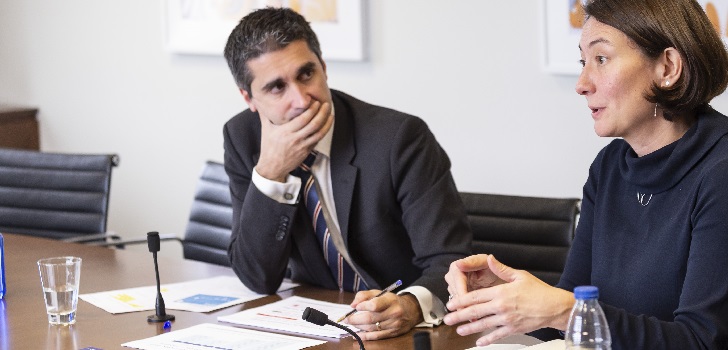
Junk bond. Triple A. Ba 1. These codes, unknown for the general audience, started to appear in news reports in midst of the economic crisis, when rating agencies lowered day after day its rating for the Euroepean bonds. Currently, fashion groups also started to open to the capital markets and, with it, to the examination of rating agencies. One of the biggest rating agencies in the world is Moody’s, which values the risk of fashion companies like Pronovias, Tendam or El Corte Inglés.
The responsible of measuring the health of these three Spanish fashion groups is Víctor García, who just left the London office to settle in Madrid for the imminent Brexit. At an European level, Marina Albo is in charge of the valuation of the retail, pharmaceutical and supermarket sectors, . The expert, with six years experience in the Swiss bank HSBC, leads a team of ten analysts that cover more than 150 companies in the sector.
From the Spanish headquarters of the agency, with stunning views over Madrid, both are optimistic yet careful about the future of retail, although every time they are asked about forecasts for the whole sector it emerges what they call Moody’s favourite expression: “case by case”. They do agree that fashion is not as exposed as other sectors to the fluctuations of world politics, and the result of the current transformation of the sector will leave larger, stronger and more flexible companies. “We have the model at home: I cannot think of a better role model that Inditex for the future,” stated García.
Question: Investment in fashion retail companies has been very active during the last years. Is it still a good time for the sector?
Víctor García (VG): The macroeconomic background is being good for the retail sector in general, and for fashion as well. But the available income in households is growing quite below the prices, and this erosion of the purchasing power will necessarily be reflected in consumption and the consumer appetite.
“Investors are interested in fashion, but not at any price”
Q: Does the same happen at an European level?
Marina Albo (MA): It depends on the company. It is clear that retail is in a transformation moment and that the consumer is changing . A lot of people ask us why we have such a stable perspective for the sector if so many companies are closing. The macroeconomic perspective is good and people are going to keep buying, but not like they used to. We divide the companies of the sector in two categories: the ones that find difficult to adapt and the ones that are profiting new trends in consumption. We went from going to the store and buying what it was in hand to decide from home what and where we want to buy. Traditional retauk chains are adapting to new trends and new companies are taking part of the market.
Q: Does venture capital fear the sector?
VG.: It is true that funds exited El Ganso and Desigual, but it cannot be generalized. One case in Bimba y Lola, for example, which seemed to be about to close, but the price asked for was too high. That means there is an interest by the investors, but not at any price. The figures they were asking for lately were a little bit outside the norm.
Q: Does having many stores penalize today in the evaluation?
MA.: If the stores are profitable, it doesn’t. Everything depends on the implementation of the model by the business. We also take into account the flexibility companies have to open and close stores. In the United Kingdom, for example, rent tenures have been typically very long, and that is a problem because if a store’s business does not go well you have to keep paying the rent for ten years.
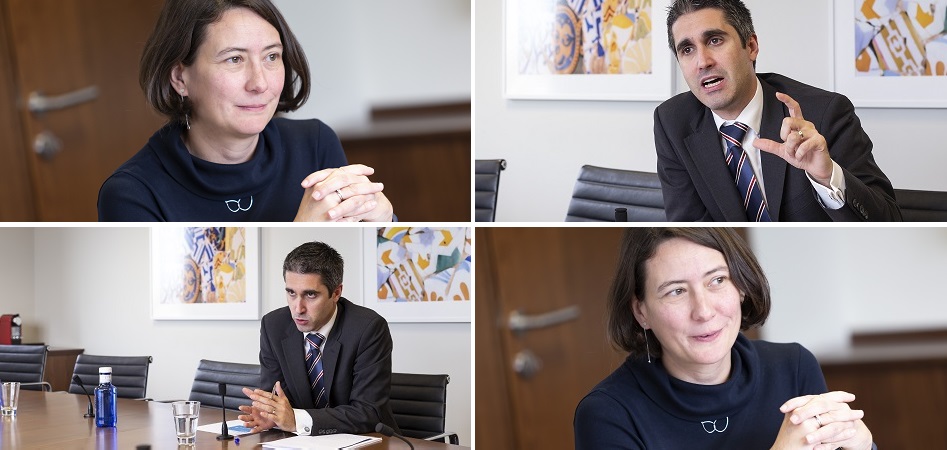
Q: Which other factors are taken into account to measure how flexible is a company?
MA.: Balance between fixed and variable costs: in the retail sector, for example, having stores on rent is a very important flexibility factor. Another aspect that we observe is the supply chain, even though again it depends of the business model: the fact that Pronovias has the supply chain in China is not an issue, but it is in fast fashion. That was the problem New Look had, which was unsuccessful when it tried to be a Zara because it had no flexibility. Another factor that we analyse is the exchange rate hedging.
VG.: And the strength of the balance: if you have a strong balance and you see your competitors are forcing much in pricing, you can lower it a bit; if not, you stay outside that commercial proposal that is going to take market share.
Q: Inditex is going to sell online all around the world in 2020, with stores at the service of e-commerce. Is this the model of the future?
VG.: Inditex has always been a pioneer and it sets the pace to follow for the rest of the operators, but not everyone has the logistic capacity and the infrastructure to do it.
“The fact that Pronovias has the supply chain in China is not an issue, but it is in fast fashion”
Q: It is said that the sector is not very efficient because it has high margins. Do you agree with this?
VG.: We are back to Moody’s favourite phrase: case by case. It is clear that there is always room to improve the structure of costs, but margins in retail are part of the business model, because you bet on everything each season.
MA.: The clothing sector cannot work with the margins of, for example, food industry, due to the discretion of the product. In the food sector, you cannot have much inventory because food spoils, everybody needs to eat and there are supermarkets everywhere. Fashion sector needs to have flexibility in its margin to adjust the risks, because if during a season the collection is not successful the company has to eat up the inventory and make discounts. It is a different model.
Q: But is there a lack of professionalization?
MA.: The sector is in the middle of a transformation. We are going from a world of many independent operators to a world of chains and brands, and the sector is getting professionalized. It occurred the same in supermarkets: in Spain 50% of the food purchase is still being carried out at independent stores, but little by little big chains are taking this part of the market. Retail industry is probably going through the same and a professionalization is being done with the arrival of chains.
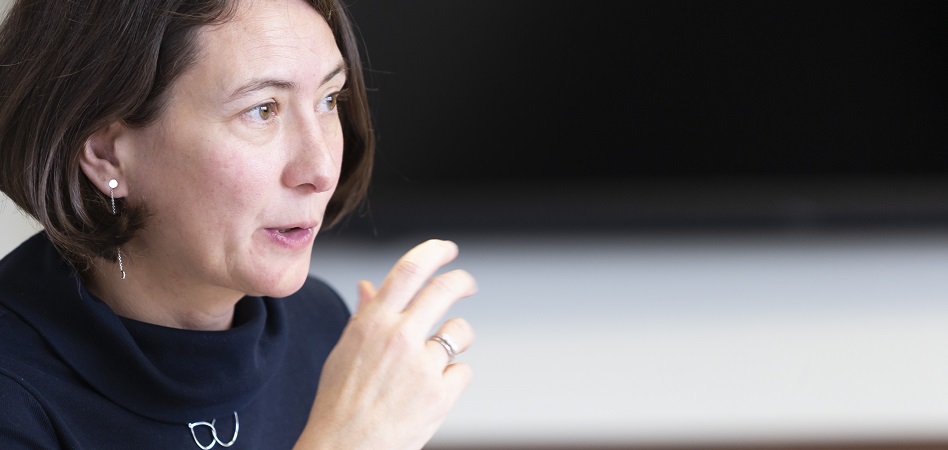
Q.: Are we going towards the sector with less margins?
VG.: There is a lot of competence, and that necessarily has to translate into investment in pricing at the expense of margins.
MA.: The consumer is focusing on the cheaper (the supermarket, Primark…) and the accessible luxury like SMCP. The segment that in the middle is the one that is going to suffer the most. Inditex and H&M are in that group, but they are doing relatively well.
VG.: Besides, we are seeing that operators prefer to sacrifice a little bit of the initial gross margin to gain speed in its supply chain. They compromise the initial margin to have speed. Especially in the case of companies dedicated to fashion in the most pure sense, the business model prefers to have its suppliers closer, even if that is more expensive. Obviously that penalizes the initial margin, but the gross operating profit is bigger.
MA.: We always tell the example of New Look, which was explained by themselves: when torn pants became the trend, three or four years ago, they did not see that trend going and had the store full of clean pants. With a production chain of minimum five or six months of lead time it was impossible for them to react on time and got lost in the middle of the boom.
“The brand is every time more important, and in that sense the consumer is focusing: they look for commodity or a brand”
Q.: The expense has moved from fashion to other sectors. Do you see a risk in fashion going out of fashion?
VG.: Something that we have into account is what we call fashion risk. For example, fashion risk in Cortefiel is much lower that the one Zara can have, because it has a conservative line and a traditional client. That is important to value risks: to what extent must the company reinvent every season to make something that clicks with the consumer.
MA.: But the brand is getting more importance, and in that sense the consumer is focusing: they look for commodity or a brand. Time ago, people went to the store to check what was in it. Today you know more or less what is in it, you have much more information.
Q.: One of the big crisis of the year was Sears’. What future do you forecast for the department store?
VG.: The United States cannot be compared to the United Kingdom, neither both of them with Spain. Sears underestimated the potential of online, it had department stores in the fifties and never invested enough in the web, precisely because the business model in itself did not generate enough cash flow to reinvest. It has its particularities, but such case is not unique: Macy’s and Nordstrom also have difficulties. In the United States, one of the main reasons is that the levels of online penetration are huge and there is a saturation of department stores per citizen.
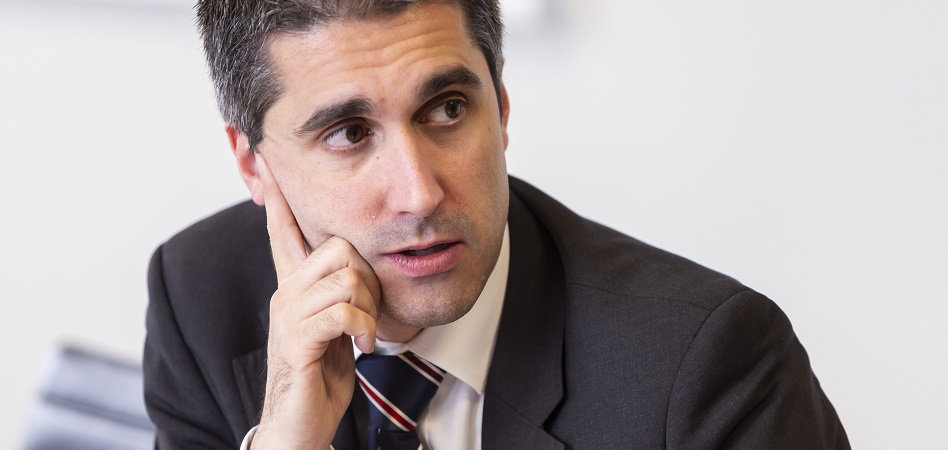
Q.: What about Spain?
VG.: In Spain it is completely different. El Corte Inglés noticed soon that digitalization of the business was key to compete with other operators. And it is true that the rate of e-commerce penetration in Spain is low, but it will grow. El Corte Inglés corrected the errors that had committed in the past by that type of operators and invested in digitalization, mobile and omnichannel integration.
Q.: It is said that out of one hundred stores, fifty are unnecessary…
MA.: In the United Kingdom, only Debenhams has 600 stores. And then Selfridges, House of Fraser, Harrods… In Spain, one hundred is the figure? I don’t know if I could say it, but compared with other countries there is not that much saturation.
Q.: Having a lot of cash now is today more important than ever?
MA.: Financial flexibility is always essential. We evidently observe the credit risk and our qualification is a mix between, on the one hand, strategy and business model and, on the other hand, how flexible it is from the financial point of view… If you have negative results, how much do you have to resist. Why is Debenhams resisting better that House of Fraser? Because it had much less debt.
“Why is Debenhams resisting better that House of Fraser? Because it had much less debt”
Q.: Is it more important than before?
VG.: It has been a division of the capex, between stores and online, so the necessity to invest is bigger than before. On one hand, investment in digitalization is not once and then you forget, but it is constant, and simultaneously you have to maintain the capex for the physical channel.
Q.: What should an executive in fashion business fear the most? Trump, Brexit or trade war?
MA.: A Spanish company? Nothing.
VG.: It is a matter of your supply chain, of how concentrated is your client. Indirectly, it can have some macroeconomic effect, but a direct effect itself as a consequence of a trade war or Brexit, no.
Q.: Fashion is traditionally financed with banks. Is it because fashion is not interested in investment or why it is not afraid of it?
MA.: It is not a fashion phenomenon, but a general and European one. To direct to the bond market you have to produce some quantity of debt. I don’t know anyone who has produced less than 250 million euros, and for that you need a certain size. And the retail company, in general, has been traditionally much segmented. But that is changing, because companies are doing more and also, with the crisis, a concentration of the banks is being produced, which entails less competency to lend and potentially worst conditions. In the United States, for example, companies are bigger, because the country is too, and there are proportionally less banks. But that is something very common, that companies finance themselves with capital markets.
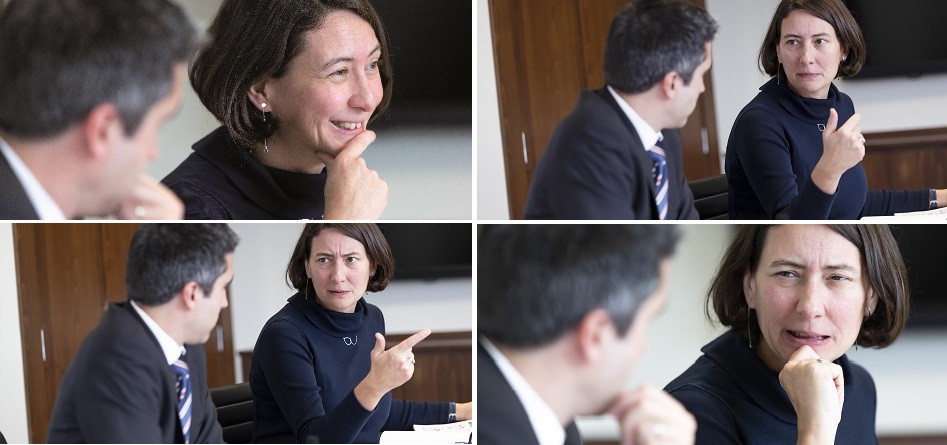
Q.: It seems the company of the future will be bigger but will have to be flexible. Is this an utopia?
MA.: It is a dilemma. Unilever sold Flora, and the management of Flora told us they would be way more flexibles and they would have a cost structure much more light. On the other hand, pertaining to a large group gave them a strength in their trade relations that they are not going to have. There is always a dilemma in if small is beautiful or if it is better to have big scale.
VG.: What is clear is that scale is essential, and that is going to remain like that. As a company looking at the future, I see Inditex as a role model: it is huge, it has great flexibility, it adapts to local markets’ conditions… Not all the companies know how to operate in the same way, but being large does not imply being rigid.
Q.: Large companies are very tied to a visionary founder. What happens if that figure disappears?
MA.: It depends on how involved is the founder in the company strategy. Every company starts with a person that has an idea and wants to do something, and there is always a risk when that person retires. We focus on the corporative management, in the way the succession is planned. Every company in which there is a key someone is what we call the key man risk.
“Every company in which there is a key person has we call the key man risk”
Q.: How do you measure how dependable of a person is a company?
VG.: Having a board of directors with lots of independent members with an historic of good decisions is a good indicator. If the company is close and has no representation of independent members, it seems that everyone is following what the key man says…
Q.: Just by having a written plan is enough to succeed?
MA.: Everything depends: if the key man is a forty-year old someone in leadership, there can always be a hypothetical plan. If that is an eighty-year old person and already chairman, we would wait for the succession plan to be more or less implemented, and as the mentioned people already have stable executive roles.
VG.: At the pace aspects like purchasing habits, markets, competitive background are changing… Even if a person took good decisions in the last twenty years and had visionary ideas, nothing grants you the future decisions are going to entail the success of the company.


info@themds.com
Validation policy for comments:
MDS does not perform prior verification for the publication of comments. However, to prevent anonymous comments from affecting the rights of third parties without the ability to reply, all comments require a valid email address, which won’t be visible or shared.
Enter your name and email address to be able to comment on this news: once you click on the link you will find within your verification email, your comment will be published.